How to Meditate Daily: 10 Essential Steps

Written by
Robert Kelly
Reviewed by
Prof. Benjamin Murphy, Ph.D.Learn to perform daily meditation by practicing your breath for two minutes a day.
Select the same time each day, such as the morning or during commutes to develop your meditation habit.
At first, practice guided apps before moving to lasting sitting periods of quiet in your own space.
Find ways to manage any physical discomfort from sitting in a chair or position, such as using a chair or changing your position slightly.
Utilize habit-stacking and tracking your habits non-judgmentally to maximize streaks.
Engage your mindfulness practice to other daily experiences such as eating carefully or walking mindfully through your space.
Article Navigation
It feels daunting to learn how to meditate daily when time seems to be at a premium. When you have a job and a family to care for, it doesn't seem easy to allocate time at all. You may feel too restless to sit still or have a racing mind.
Regular practice offers three transformative benefits you can experience. Your stress levels decrease while mental focus sharpens noticeably. Emotional balance improves, helping you respond calmly to daily pressures.
This guide shares practical methods for beginners starting meditation. We focus on simple techniques that fit real-life demands. Start small because consistency always beats perfect sessions.
Essential Steps to Start Meditating
Make your meditation space without spending money. Use any quiet corner with a firm chair or floor cushion. I began to use my kitchen chair, facing a blank wall. The key is consistency, not.
Start by focusing on your breathing patterns. When you inhale, notice the cool air that goes in through your nostrils. With each exhalation, notice the warmer air that leaves your nostrils. To help maintain focus at the beginning, count your breaths in your head.
Recognize that mind wandering happens naturally to everyone. Research indicates that minds wander for about 50 percent of waking hours. When our thoughts do this, take note of it and return to your breathing. This realignment develops mental strength.
Select comfortable postures that are ideal for your body. It is okay to sit upright in chairs if you experience pain in lower positions. If you have back problems, you can lie down with your knees bent. When the posture is comfortable, you are more likely to keep up a regular
Space Requirements
- Identify quiet locations: unused corners, parked cars, or outdoor benches work effectively
- Essential supports: chair with straight back or floor cushion for hip alignment
- Minimal ambiance: natural lighting reduces eye strain during practice sessions
- Flexibility note: noise-canceling headphones can substitute for silent spaces
- Temperature control: maintain 68°F (20°C) for optimal comfort
- Personalization: add meaningful objects like smooth stones or plants
Posture Options
- Seated position: keep spine vertical, shoulders relaxed away from ears
- Floor variations: cross-legged (pillow under knees) or kneeling (blanket between calves)
- Chair method: feet flat, palms facing upward on thighs, lower back supported
- Lying down: only if alert; place pillow under knees to reduce back strain
- Walking meditation: slow pace focusing on heel-to-toe weight transfer
- Adaptive postures: use wall support for back pain or pregnancy modifications
Time Selection
- Morning advantage: cortisol levels naturally higher for alertness
- Evening benefit: lowers heart rate by 8-10 bpm before sleep
- Work breaks: 5-minute sessions between meetings reduce stress accumulation
- Consistency tip: same daily time reinforces habit formation in neural pathways
- Flexible scheduling: adjust for shift work using pre-work or meal transitions
- Duration guideline: minimum 120 seconds maintains neuroplasticity benefits
Essential Props
- Cushions: buckwheat-filled zafus provide stable hip elevation
- Timers: vibration alerts prevent jarring audio interruptions
- Clothing: loose fabrics allow unrestricted diaphragmatic expansion
- Blankets: wool layers maintain body heat during stillness
- Eye covers: block visual distractions in bright environments
- Journals: note pre/post-meditation mental states for progress tracking
Sensory Optimization
- Auditory: white noise machines mask urban sounds at 45-55 decibels
- Olfactory: lavender or sandalwood scents activate parasympathetic responses
- Tactile: textured mats ground awareness through palm contact
- Visual: blue-toned lighting reduces melatonin suppression pre-sleep
- Thermal: warm socks prevent temperature-related distraction
- Gustatory: mint tea beforehand primes alertness without caffeine

Morning Practice
- Optimal window: within 30 minutes of waking before daily distractions accumulate
- Light advantage: natural dawn light regulates circadian rhythm hormones
- Habit pairing: meditate immediately after bathroom routine or first hydration
- Duration tip: start with 120 seconds before breakfast preparation begins
- Position recommendation: east-facing windows enhance sunlight exposure
- Mindset focus: set daily intentions during exhales
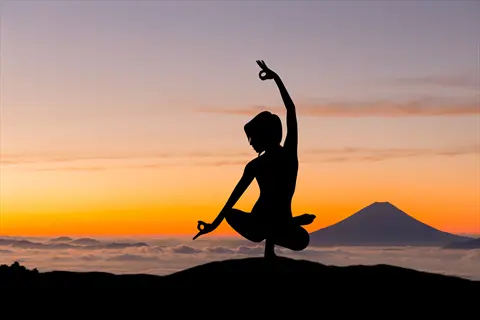
Evening Practice
- Transition ritual: replace screen time with meditation before dinner
- Body scan benefit: releases muscle tension accumulated during daytime activities
- Low-light adjustment: use dim lamps to avoid overstimulating melatonin production
- Duration adjustment: extend sessions to 5-7 minutes for deeper unwinding
- Breath technique: extended 8-second exhalations activate vagus nerve
- Progressive relaxation: systematically release facial/jaw tension first

Commute Meditation
- Public transport adaptation: focus on vibration sensations during travel
- Audio support: binaural beats through headphones mask engine noises
- Posture adjustment: upright seating with backpack as lumbar support
- Duration alignment: practice for 1-2 stops on subway or bus routes
- Visual anchor: softly gaze at stationary objects passing windows
- Breath awareness: sync with vehicle motion rhythms

Work Break Session
- Desk configuration: forward-fold position with forehead on stacked hands
- Stealth technique: silent breath counting during video call mute periods
- Ergonomic support: chair tilt at 100-degree angle reduces spinal pressure
- Micro-sessions: 90-second practices between tasks resets focus
- Digital reminder: calendar alerts with nature sound notifications
- Co-worker inclusion: initiate group sessions for accountability

Nature Integration
- Grounding method: barefoot contact with grass or soil enhances connection
- Sensory immersion: mentally catalog bird songs, wind textures, leaf movements
- Duration flexibility: extend up to 20 minutes in green spaces
- Weather adaptation: waterproof mats for damp conditions
- Sun positioning: shaded areas prevent glare distraction
- Seasonal adjustment: winter focus on breath clouds; summer on skin warmth

Pre-Sleep Wind Down
- Mattress positioning: semi-reclined with pillows under knees
- Temperature control: 65°F (18°C) room temperature optimizes sleep onset
- Candle alternative: salt lamps provide non-stimulating glow
- Progressive method: start at toes, release tension upward to scalp
- Breath ratio: 4-second inhales, 6-second exhales match sleep physiology
- Sheet texture: high-thread-count cotton enhances tactile comfort

Shower Mindfulness
- Water focus: track temperature changes across skin surfaces
- Sound anchoring: concentrate on showerhead droplet patterns
- Duration match: practice throughout entire shower routine
- Safety consideration: non-slip mats and seated options
- Aromatic enhancement: eucalyptus oils deepen respiratory focus
- Post-shower ritual: towel-drying with deliberate slow motions

Mealtime Awareness
- Pre-bite pause: three breaths before lifting utensils
- Sensory inventory: note food colors, textures, aromas pre-consumption
- Chewing rhythm: 20-30 chews per bite synchronizes with breath
- Portion alignment: smaller plates extend mealtime practice duration
- Silent intervals: no conversation during first five minutes
- Post-meal reflection: stomach fullness awareness on 1-10 scale

Walking Meditation
- Step synchronization: inhale for two steps, exhale for three steps
- Path selection: smooth 15-20 foot (4.5-6 meter) indoor/outdoor loops
- Foot awareness: notice heel-to-toe weight shifts with each movement
- Pace guideline: 50% slower than normal walking speed
- Arm position: hands clasped behind back reduces swinging distraction
- Terrain variation: grass, sand, or pavement offer distinct tactile feedback
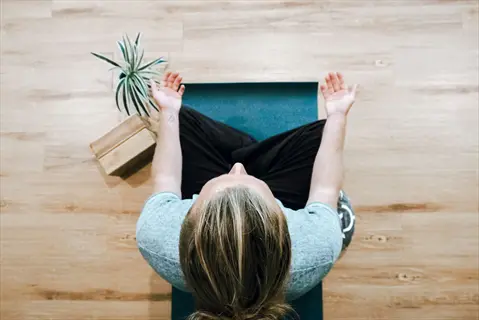
Emergency Stress Reset
- Trigger identification: physical tension or rapid breathing as cues
- Micro-duration: 60-second sessions behind closed doors
- Covert positions: bathroom stall seated or stairwell standing
- Power breath: double exhale duration compared to inhale
- Mantra option: repeat 'calm' silently during critical moments
- Post-crisis review: journal triggers for future prevention
Using Guided Meditations and Apps
Free meditation apps offer basic tools for free. You get simple timers with vibration alerts and beginner guided meditations. You can track progress through streaks and total meditation minutes. Community features connect you with global groups for accountability and support.
Upgrading to a premium subscription grants you access to specialized programs such as courses for anxiety or sleep stories. Additionally, AI mood tracking collects data about your mood to personalize recommendations and improve your experience engaging with the content. Family plans allow you to share with your household, while live sessions connect you directly with your teachers.
Make the independent practice transition gradual by progressively cutting the amount of guidance by about 10% per week, or alternating between sessions with guidance and sessions in silence every other day. At intervals in the recording, there will be stops where the impressions or sensations in the body can be noted before returning attention to the normal rhythm of the breath.
Address privacy concerns by examining the application's data policy. The majority of applications track the session duration and mood enrollments anonymously. You can indicate whether to allow a meditation app to share information with third parties in your privacy settings/your user agreement.
Apps have accessibility features such as being compatible with screen readers. They may offer subtitles for users with hearing impairments and high-contrast modes for those with low vision. Voice commands enable hands-free session starts and provide haptic signals to indicate milestones through vibrations.
Free Features
- Basic timers: vibration alerts at interval milestones during sessions
- Library access: 5-10 starter guided practices for fundamental techniques
- Progress tracking: streak counters and total minutes meditated
- Community features: join global meditation groups for accountability
- Offline capability: download sessions for airplane/travel use
- Customization: nature sound mixing and background volume control
Premium Advantages
- Expert courses: multi-week programs for anxiety or focus improvement
- Sleep content: specialized stories and soundscapes for insomnia relief
- Personalization: AI recommendations based on mood logging trends
- Family plans: simultaneous multi-device access for households
- Advanced stats: heart rate variability tracking during sessions
- Live events: virtual group meditations with teachers
Beginner Recommendations
- Insight Timer: largest free library with 100,000+ guided options
- Smiling Mind: evidence-based programs for different age groups
- Healthy Minds Program: neuroscience-backed foundation course
- Medito: completely free with no paywalls or subscriptions
- Palouse Mindfulness: structured 8-week MBSR course at no cost
- Tide: integrates Pomodoro work breaks with meditation
Transition Techniques
- Gradual reduction: decrease guidance volume weekly by 10%
- Hybrid method: alternate days between guided and silent practice
- Self-check prompts: pause recordings to notice bodily sensations
- Anchor transfer: shift focus from voice to breath sensations
- Journal reflection: compare experiences post-guided vs. silent
- Milestone celebration: mark first unguided week with ritual
Accessibility Features
- Screen reader compatibility: VoiceOver and TalkBack support
- Subtitles/transcripts: for hearing-impaired practitioners
- High contrast mode: assistive viewing for low vision
- Motor adaptation: switch controls for limited dexterity
- Voice commands: start/stop sessions hands-free
- Haptic signals: vibration patterns for session milestones

Breath Focus
- Structure: verbal cues for inhale/exhale timing and depth
- Variation: counting methods from 1-10 with reset reminders
- Sensory guidance: prompts to notice air temperature/texture
- Distraction handling: gentle refocus phrases for wandering minds
- Progression: gradual reduction of verbal prompts over weeks
- Beginner tip: start with 3-minute versions before extending
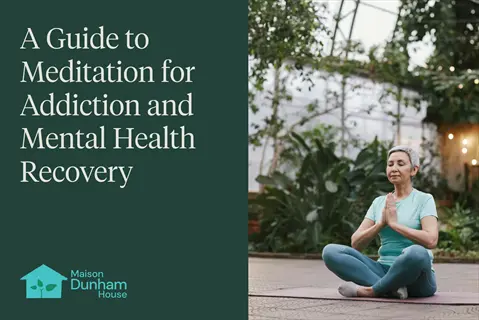
Body Scans
- Sequence: systematic attention from toes to crown direction
- Release cues: 'soften' or 'melt' prompts for tension areas
- Duration options: 10-minute quick scans vs. 30-minute deep
- Posture adaptation: seated, standing, or reclined variations
- Therapeutic focus: chronic pain relief protocols available
- Beginner tip: use during lunch breaks for physical reset

Loving-Kindness
- Phrase progression: self → loved ones → neutral → difficult → all beings
- Language options: recordings in 20+ languages
- Emotional pacing: gradual intensity increase week-to-week
- Visual aids: heart imagery during compassion cultivation
- Cultural variations: secular vs. Buddhist approaches
- Beginner tip: practice after conflicts for emotional processing

Sleep Stories
- Narrative types: nature journeys, abstract imagery, or gentle tales
- Voice profiles: deep male, soothing female, or celebrity options
- Sound layering: embedded rain/wave sounds below narration
- Fade technique: volume decreases toward unconscious transition
- Duration range: 15-45 minute options for different sleep needs
- Beginner tip: combine with blue light blocking glasses

Movement Integration
- Synchronization: breath-linked stretching or walking cues
- Pace options: restorative slow flow or energizing sequences
- Injury modifications: chair-based or limited mobility versions
- Environmental adaptation: home, office, or park settings
- Multi-sensory: combined with nature soundscapes
- Beginner tip: start with 5-minute desk stretches
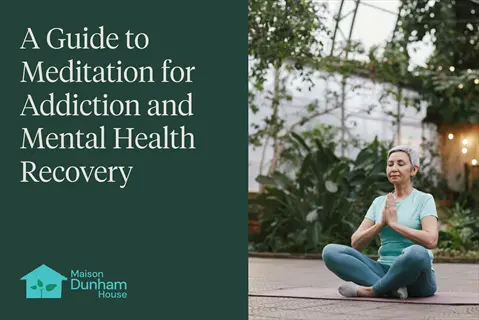
Anxiety Relief
- Grounding techniques: 5-4-3-2-1 sensory awareness prompts
- Physiological focus: heart rate regulation guidance
- Emergency protocols: 1-minute panic attack interventions
- Biofeedback integration: HRV monitoring on compatible apps
- Cognitive reframing: thought defusion language practice
- Beginner tip: bookmark quick-access versions
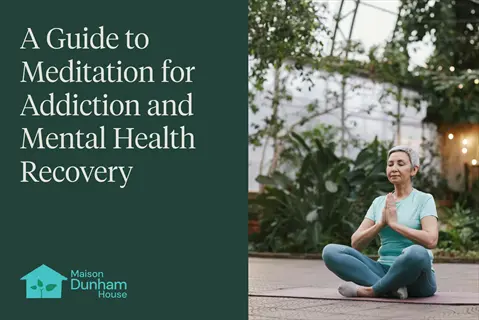
Focus Enhancement
- Attention drills: object concentration exercises
- Distraction simulation: gentle interruption recovery practice
- Neuroplasticity approach: daily progressive challenge increase
- Productivity pairing: pre-work or study session priming
- Brainwave alignment: binaural beats integration
- Beginner tip: use before important meetings
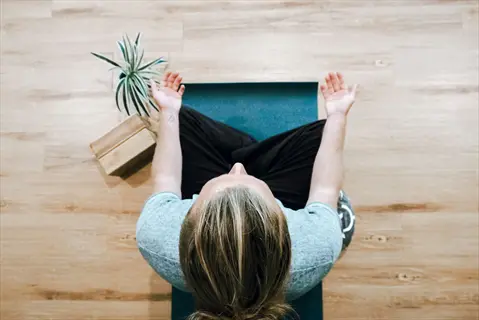
Pain Management
- Sensory reinterpretation: temperature/texture focus shifts
- Breath channeling: visualization to affected areas
- Medical collaboration: protocols co-designed with clinicians
- Chronic condition programs: migraines, arthritis, fibromyalgia
- Medication pairing: timing guidance with treatment schedules
- Beginner tip: start during low-pain periods first
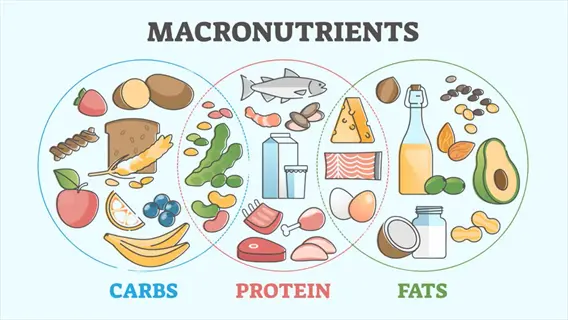
Mindful Eating
- Pre-meal rituals: 1-minute awareness priming exercises
- Bite analysis: texture/taste recognition prompts
- Portion awareness: hunger/fullness scale integration
- Emotional eating: craving investigation techniques
- Cultural appreciation: gratitude for food origins
- Beginner tip: practice first with snacks not meals
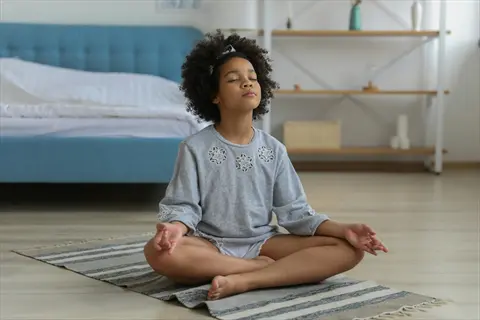
Parent-Child Sessions
- Age adaptation: 3-5, 6-12, and teen-specific content
- Engagement tools: animal breathing techniques and imagination
- Short duration: 1-5 minute attention-appropriate lengths
- Co-participation: family group session guides
- Emotion naming: feeling identification through colors/shapes
- Beginner tip: incorporate during bedtime routines
Building Consistency in Daily Practice
Connect meditation with your current habits such as your daily coffee routine. Meditate while your beverage is cooling down. Determine where it stacks best afterwards: brushing your teeth; before your commute. Keep your cushion near the coffee maker for visual prompts.
Track progress using non-judgmental methods. Use a calendar to make simple marks for sessions that were completed. Always journal brief notes about your experience; never journal about the quality of your session. Celebrate simply showing up, irrespective of how long you did it or how focused you felt while doing so.
Select accountability partners that align with your personality. Private check-in works well for introverts, while social obligations are motivational for extroverts. App streaks can boost tech lovers. Lastly, consequences like pledges
Maintain streaks during disruptions with flexible rules, honor 2-minute sessions during crises. Meditate in cars or bathrooms when traveling. Shift practice windows 3 hours when necessary. Adapt positions for injuries.
Habit Stacking
- Pair meditation with tooth-brushing: practice immediately after dental care
- Coffee/tea ritual: meditate during beverage cooling time
- Commute transition: meditate before starting vehicle engine
- Work break alignment: practice during computer boot-up sequences
- Mealtime integration: meditate before first bite of meals
- Digital detox: replace social media scrolling with meditation
Environmental Triggers
- Visual cues: place meditation cushion in high-traffic areas
- Technology prompts: set recurring phone/calendar reminders
- Scent associations: use specific aromas only during practice
- Clothing ritual: wear designated meditation shawl or socks
- Light signals: colored smart bulb indicating meditation time
- Sound anchors: chime notifications at scheduled intervals
Accountability Systems
- Partner commitment: weekly check-ins with meditation buddy
- Social sharing: private group updates (no public posting)
- App streaks: utilize built-in tracking features in meditation apps
- Journal logging: brief daily entries about practice experience
- Reward milestones: non-food celebrations for consistency
- Consequence setup: donate money for missed sessions
Flexibility Frameworks
- Minimum rule: honor 2-minute sessions during crises
- Location substitution: practice in cars or bathrooms when traveling
- Time-shifting protocol: allow 3-hour flexibility windows
- Posture adaptation: meditate lying down when injured
- Sensory alternatives: focus on ambient sounds when distracted
- Guided substitution: use audio when self-guided focus falters
Motivation Maintenance
- Benefit journaling: record daily mental clarity observations
- Pre-practice intention: state purpose aloud before starting
- Progress photos: monthly self-portraits showing posture improvement
- Audio notes: record 10-second voice memos about practice value
- Gratitude reflection: acknowledge meditation access privilege
- Obstacle anticipation: plan solutions for predicted disruptions
Overcoming Common Challenges
Adjust your posture for physical comfort during meditation. Use chairs with lumbar support if back pain occurs. Place a rolled towel under sensitive knees.
Implement micro-meditations when time feels limited or hard to carve out. One-minute breathing can be done at traffic lights, while waiting for the printer, and so on! You can schedule mini-meditation sessions (even five minutes) in your calendar without disrupting a packed schedule. These short sessions will help build consistency in your practice.
Displace mental agitation via sensory anchors. Stick palm contact or surrounding sounds into the brain's maelstrom. Count breaths, backwards from one hundred, to still the racket of thought. I carry a smooth stone to touch during the tumultuous periods.
You can prevent drowsiness during meditation by positioning yourself against a wall. Make sure to keep your eyes soft, looking downward, at about a forty-five-degree angle. You can splash cool water on your face immediately beforehand. If you sense fatigue will affect your practice, do it after doing light stretches.
Physical Discomfort
- Back pain solution: use chair with lumbar support and wedge cushion
- Leg numbness prevention: shift positions every 5 minutes
- Neck strain remedy: align ears over shoulders with chin slightly tucked
- Hip tightness accommodation: seated forward fold over pillow stack
- Knee sensitivity adjustment: place rolled towel under knees
- Temperature regulation: layer clothing for easy adjustment
Time Constraints
- Micro-sessions: 1-minute breathing at traffic lights or elevator waits
- Task integration: meditate while waiting for water to boil or printer jobs
- Calendar blocking: schedule as non-negotiable 5-minute appointments
- Digital reminder: set recurring phone alerts with calming chimes
- Commute utilization: practice on public transport or before driving
- Priority reframing: view meditation as efficiency investment
Mental Restlessness
- Noting technique: silently label thoughts 'thinking' before returning
- Sensory anchoring: focus on tactile sensations like palm contact
- Counting variation: backward from 100 to reduce mental chatter
- Open awareness: expand attention to all sounds in environment
- Movement incorporation: subtle finger-tapping synced with breath
- Guided transition: use brief audio prompts during turbulent days
Sleepiness/Fatigue
- Posture correction: meditate standing against wall or walking slowly
- Eye position: maintain soft gaze at 45-degree angle downward
- Temperature adjustment: splash cool water on face before starting
- Breath variation: slightly faster inhales through nose
- Timing shift: practice after light physical activity like stretching
- Environment change: meditate near natural light sources
Emotional Resistance
- Self-compassion phrases: use 'It's okay' during frustration
- Duration reduction: honor 2-minute minimum during emotional turmoil
- Object focus: hold smooth stone while redirecting attention
- Journal prelude: write worries before meditating to clear mind
- Acceptance practice: allow emotions without analysis during session
- Post-meditation processing: reflect on feelings after practice
Mindfulness Beyond Meditation
Practice sensory awareness during daily activities, such as eating. Notice the colors and textures of the food before taking a bite. Notice flavors separately while chewing slowly. Often, while washing dishes, I pause to notice the texture of the soap, allowing me to be fully present in the moment.
Notice your breath awareness as you perform the routine. Match steps while walking, coordinating inhalation and exhalation with task performance. Take three conscious breaths before answering a phone call. When using the computer, observe the pressure of your fingers on the keyboard between functions.
Ensure posture alignment when seated, standing, or navigating about in the world. Your ears should be stacked over your shoulders when working at your desk. When standing, ensure that your weight is distributed evenly through both feet.
Shift between formal and informal practice, quickly, using simple cues. Pause at the door for one breath of mindfulness. Set a phone reminder to check your posture. I use the sound of the kettle boiling as a cue for kitchen mindfulness.
Eating Practices
- Pre-bite ritual: pause to appreciate food colors and aromas
- Chewing awareness: 20-30 chews per bite noticing texture changes
- Utensil placement: rest fork between bites to slow pace
- Sensory inventory: identify sweet/salty/sour elements separately
- Fullness tracking: rate hunger on 1-10 scale halfway through meal
- Gratitude reflection: mentally thank food sources before eating
Movement Integration
- Walking rhythm: sync steps with inhalation/exhalation cycles
- Posture alignment: stack ears over shoulders during standing activities
- Weight shifting: notice pressure points in feet when standing
- Transition awareness: pause before sitting/rising from chairs
- Stair climbing: feel muscle engagement with each step ascent
- Doorway pauses: take one breath before entering new spaces
Work & Communication
- Email pauses: three breaths before opening messages
- Meeting preparation: set intention before speaking
- Keyboard awareness: notice finger pressure on keys
- Listening posture: soften gaze during conversations
- Phone ritual: exhale fully before answering calls
- Task switching: stretch between different projects
Household Activities
- Dishwashing meditation: focus on water temperature and soap textures
- Laundry folding: align breaths with folding motions
- Sweeping practice: create rhythmic patterns with broom strokes
- Gardening connection: feel soil textures while planting
- Cooking awareness: notice ingredient transformations during cooking
- Cleaning transitions: pause between different cleaning tasks
Leisure Integration
- Reading pauses: look away every page to notice body posture
- Music listening: focus on individual instruments separately
- Screen breaks: 20-20-20 rule (20-second gaze shift every 20 minutes)
- Nature observation: track cloud movements or leaf patterns
- Pet interaction: synchronize breathing with animal rhythms
- Creative flow: notice hand sensations during art activities
5 Common Myths
To practice meditation effectively, you must clear your head of all thoughts\.
Rather, the practice begins with noting the thoughts as they arise non judgmentally, then gently bringing your focus to the breath or a third point of focus. This continual refocusing on the new subject builds awareness of mental states rather than eliminating thoughts. Many find their minds wander easily and the process is
You might have to meditate a minimum of one hour a day in order to gain anything.
Generally noticeable benefits in the way of improved attention and lessened tension will be discovered in a few weeks to come from the daily habit of confidently exercising five or ten minutes. A brief session of exercise gives practice in attending to and observing what is taking place. Many say that within a few days of a short session they found themselves feeling calmer. It is not so much the length of time spent as the certainty of regular exercise that counts.
It is only the traditional cross-legged floor postures that are accepted as authentic meditative postures.
There are various other postures which fit various needs: chairs for office workers serve the purpose of keeping the spine aligned, walking meditations are appropriate for the active person, and the reclining postures are valid for the physically incapacitated person. The history of the different cultures of the world show a vivid record of the practice of meditation in various
If you lean on guided meditations or apps, you are failing to learn how to meditate alone, authentically.
Guided sessions are very helpful training wheels. You are learning tools and practical skills like breath awareness, body scanning, etc. These sessions help you, as a beginner, gather the tools you need to learn how to concentrate and meditate before moving into silent meditations. This follows a progression like learning any skill before doing it yourself
You should attain instant inner peace and spiritual insights right after your first session of meditation.
Its benefits are cumulative, arising in due time from its regular practice, as physical fitness is slowly developed. The first sessions, however, are often very trying for the student, his mind being unaccustomed to repose. But after the first few weeks of practice both concentration and equ
Conclusion
Meditation progresses as a skill over time that requires your investment in practice. Like becoming proficient at an instrument, you must regularly and slowly practice to improve, not just expect mastery. I saw an actual change in
Choose consistency over perfection every single time. Being present for three minutes is more important than not participating at all because you cannot squeeze in thirty minutes. The daily effort demonstrates your genuine commitment to making progress and bringing about change.
Choose one technique from this guide and use it today in a small, practical way. If you're commuting today, try breath counting. If you're working at your desk, do some posture checks. Small, consistent efforts will build habits that stick over time more reliably than planning something ambitious and unrealistic.
Begin practicing immediately, focusing on just a single breath. Close your eyes and feel the air enter your nostrils. Then set a timer for two minutes. This direct beginning builds momentum more than waiting for ideal situations.
External Sources
Frequently Asked Questions
How many minutes should you meditate daily?
Start with 2-minute sessions and gradually extend to 5-10 minutes for sustainable daily practice. Consistency matters more than duration, as brief regular sessions effectively build habits and neuroplastic changes.
What are the essential rules of meditation?
Core meditation principles include:
- Prioritize consistency over perfect sessions
- Accept thoughts without judgment during practice
- Choose comfortable postures that maintain spinal alignment
- Start with guided sessions before transitioning to silence
Is it beneficial to meditate every day?
Daily meditation strengthens neural pathways for focus and emotional regulation. Regular practice reduces stress hormones and improves sleep quality, with noticeable benefits emerging after consistent sessions.
Can you meditate effectively while lying down?
Lying down meditation works if you maintain alertness. Use pillows under knees to reduce back strain, but avoid this position when tired as it may cause sleepiness during practice.
What should you avoid during meditation?
Avoid these common mistakes:
- Frustration about mind wandering
- Expecting immediate enlightenment
- Ignoring physical discomfort
- Comparing your progress to others
- Skipping sessions due to perfectionism
What happens to the brain during meditation?
Meditation strengthens prefrontal cortex connections while calming amygdala activity. This rewiring process enhances emotional regulation and focus over time through repeated neural pathway reinforcement.
Should you meditate before sleeping?
Evening meditation helps transition into sleep by lowering heart rate. Use body scans or sleep stories with dim lighting to avoid overstimulation before bed.
What are practical meditation techniques for beginners?
Beginner-friendly approaches include:
- Breath counting with finger tracking
- Body scan from toes to head
- Guided sessions using meditation apps
- Mindful observation of natural elements
- Noting thoughts as 'thinking' without engagement
How do you maintain meditation consistency?
Build consistency through habit-stacking with existing routines like tooth-brushing. Use environmental triggers like designated cushions and calendar reminders to reinforce daily practice.
What are signs of correct meditation practice?
Successful meditation shows through:
- Gentle return to focus after distractions
- Reduced reactivity to daily stressors
- Improved awareness of physical sensations
- Increased patience with practice challenges
- Natural integration of mindfulness into routines

